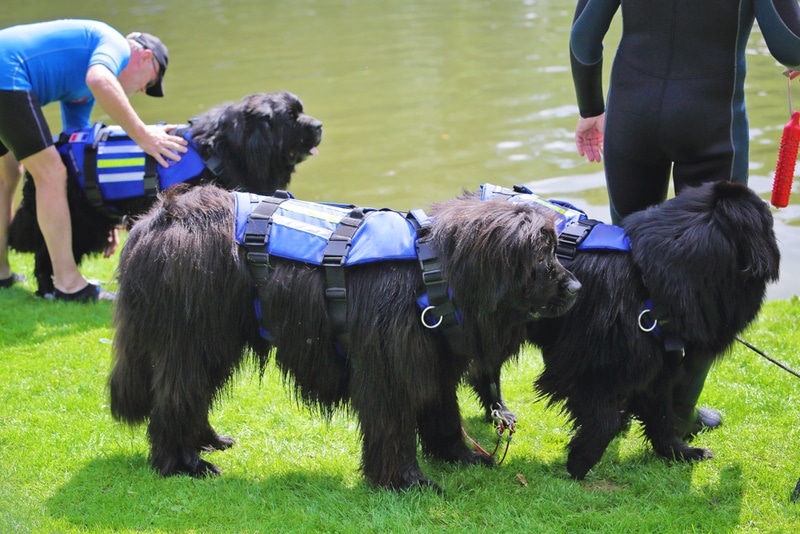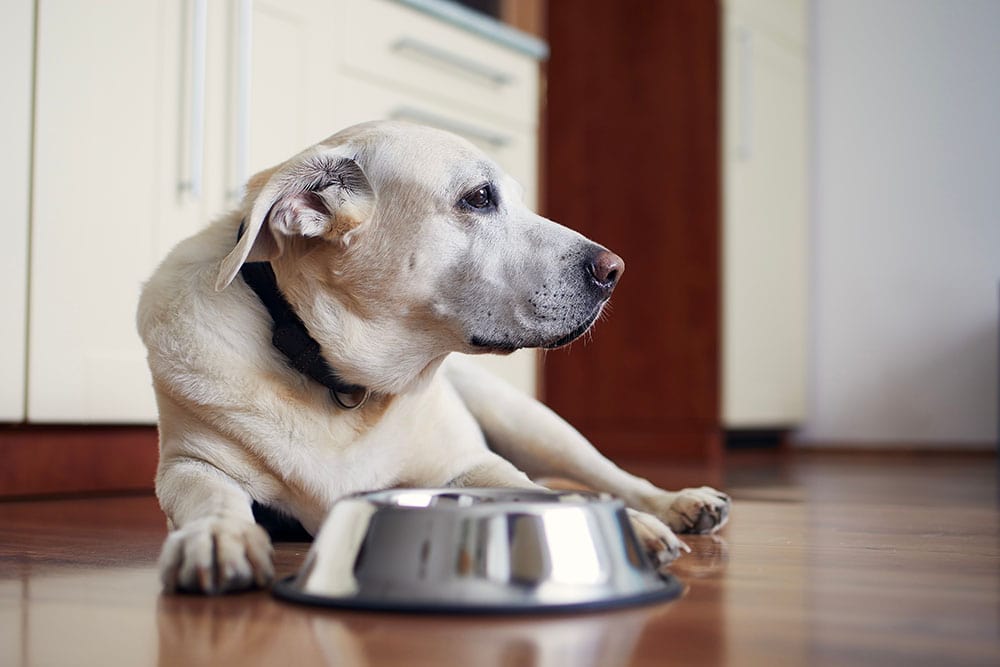Dehydration in Dogs: Vet Reviewed Signs to Look For
Updated on
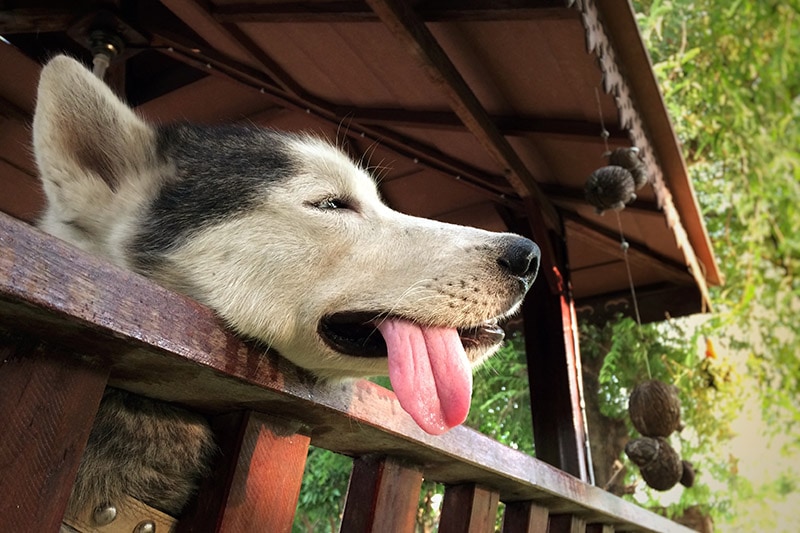
Click to Skip Ahead
Dehydration can occur for a variety of reasons in your dog, including illness, excess exercise, and lack of access to water. It’s usually something that can be reversed, but veterinary intervention is required to do so in many cases. Dehydration can become dangerous quickly, especially in puppies, small dogs, and elderly dogs, so it’s important to be able to recognize the signs. Once you’ve recognized the signs, you can help your dog rehydrate while you reach out to your vet for further guidance.
What Is Dehydration?
Dehydration occurs when your dog’s body loses more fluids than your dog is taking in, leaving them without enough internal fluids for the body to perform all necessary functions. As fluids are lost, electrolyte imbalances can begin to occur. It can be mild and can occur for relatively benign reasons, like playing or exercising in warm weather. However, dehydration can also be severe enough to lead to organ failure and death. There are a lot of reasons that a dog can become dehydrated.
When people exercise, they sweat, which is a loss of body fluid. If you exercise or sweat a lot without drinking enough water to account for what you’re losing, then you’ll become dehydrated. The same is true for dogs, except they don’t sweat like humans do. Dogs pant and sweat through the pads of their paws to stay cool. Respiration, or breathing, also causes fluid to leave the body, and the more your dog is panting or breathing, the more fluid they’ll lose.
Urination, defecation, and even nasal drainage can cause the body to lose fluids, eventually leading to dehydration if the fluids aren’t replaced. Illnesses or situations that cause your dog to lose more body fluids than normal, like a UTI, diabetes insipidus, vomiting and diarrhea or your dog not drinking enough water, whether it’s from illness, or lack of access, can quickly lead to dehydration, especially when not drinking enough and abnormal fluid loss occur in conjunction.

What Are the Signs of Dehydration?
Tenting/Turgor
Turgor refers to the ability of the skin to “snap” back into its appropriate position when pinched or pulled away from the body. Dogs that are dehydrated will have a loss of turgor. Turgor can be tested by gently pinching an area of your dog’s skin and pulling it away from the body about an inch. In a hydrated dog, the skin should quickly go back into its appropriate place when released. In a dehydrated dog, the skin may take a few seconds to return to its appropriate place, leaving a tented appearance of the skin.
Dry Mouth
When dehydration occurs, one of the first notable symptoms is dryness of the mucus membranes. The easiest mucus membranes on your dog’s body for you to touch and see are inside of your dog’s mouth. Dryness and stickiness of the gums, thickening of the saliva, and the tongue or lips sticking to the teeth can all indicate that your dog’s mouth is dry.
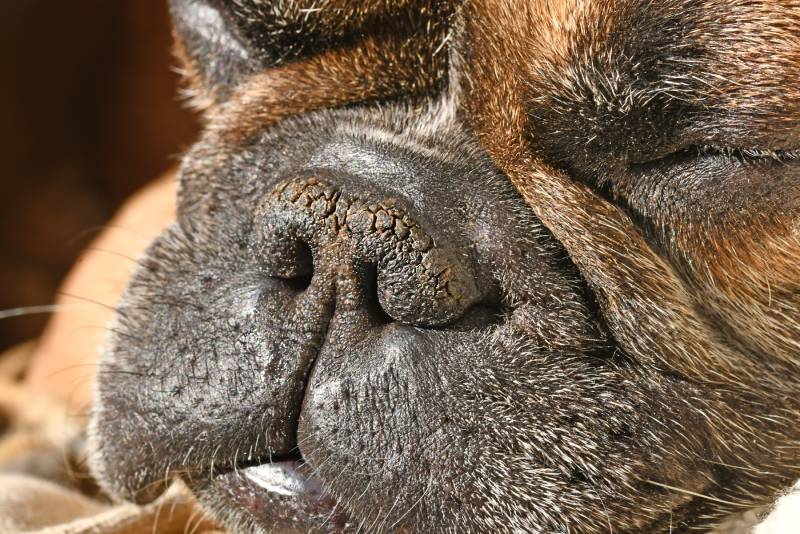
Slow Capillary Refill
When you press on your dog’s gums, they should blanch, which refers to the pinkness of the gum leaving the area that you press, turning the area white or lighter in color. If your dog is properly hydrated, then the color will return to the gums quickly—usually in under 2 seconds. The capillary refill time will take longer in a dehydrated dog, though, exceeding this 2-second mark. In dogs with dark-colored gums, it can be difficult to determine capillary refill, so this test is best performed on dogs with light-colored gums.
Inappetence
Whether your dog stopped eating and it led to dehydration, or your dog first became dehydrated and then stopped eating, these two things typically go hand in hand. Dehydration can lead to a decrease in appetite, sometimes even resulting in a refusal to eat and drink. Inappetence caused by a medical condition will cause your dog to become dehydrated, which can decrease the likelihood of you being able to get them to eat and drink again. Inappetence and dehydration are a vicious cycle with each other.
Panting
Obviously, there are a lot of reasons that dogs pant. If your dog is panting seemingly for no reason when it isn’t hot and they haven’t been playing or exercising, then this sign can be concerning. Panting isn’t specific to dehydration, though. Heart problems, fluid in the lungs and abdomen, pneumonia, pain, and many other things can lead to panting or abnormal breathing patterns. If your dog seems to be panting a lot, see if there are other signs you observe to help you determine if this sign is concerning on its own.
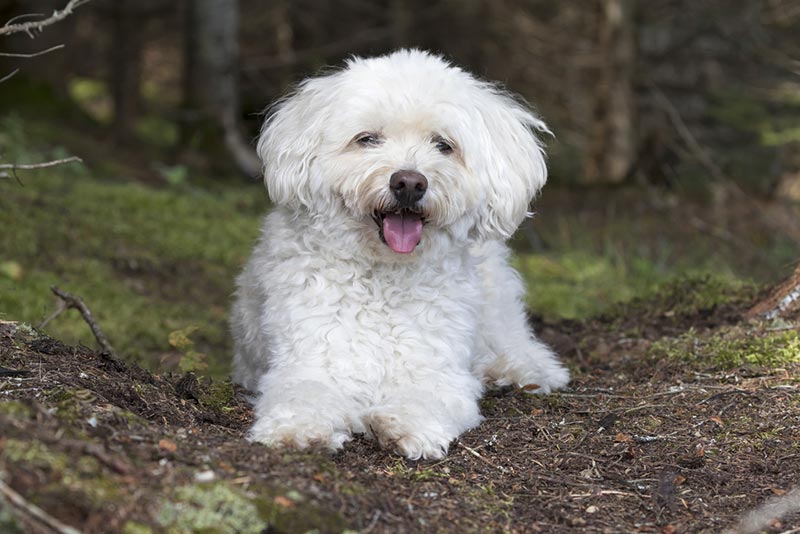
Excessively Dry Nose
Like the gums, your dog’s nose will become dry when they are dehydrated. It’s an old wives’ tale that a dog with a dry nose is sick, but if your dog’s nose becomes excessively dry or crusty, then they may be dehydrated. This is especially concerning if your dog usually has a supple, moist nose. If your dog’s nose simply feels dry but otherwise normal, there likely isn’t a reason to be concerned.
Sunken Eyes
In severe dehydration, the eyes will become more deep set within the skull, leading to a notably sunken look. There are fat pads located behind your dog’s eyes that help them sit properly within the skull. When a dog is severely dehydrated, these fat pads become dehydrated, losing their plumpness, and causing the eyes to sit further back in the skull. This is an extremely worrying sign and should immediately be assessed by a veterinarian.
Signs of Other Illnesses
If your dog is experiencing an illness that is causing them to drink and eat less, then there’s a good chance of them becoming at least mildly dehydrated. If your dog stops eating and drinking, or if they’re losing larger than usual amounts of body fluids, then they will become dehydrated. Talk to your vet about ways to keep your dog hydrated while they heal that are appropriate to your dog’s specific condition.

Degree of Dehydration
Hydration status of your dog can be categorized by professionals in terms of percentage. It is not possible to determine if a dog is 1 to 4% dehydrated. Mildly dehydrated is around 5% dehydration and will result in slightly dry mucous membranes and mildly increased skin tenting. 8 % dehydration is classed as moderate dehydration and will be accompanied by signs of dry membranes, sunken eyes and weak but rapid pulses. 10% or greater is severe dehydration and as well as a progression of the previously mentioned signs your dog will be weak, with low blood pressure and with altered levels of consciousness. Only dogs who are mildly dehydrated should be treated at home with oral fluids.
What Are the Causes of Dehydration?
As mentioned above, dogs lose fluids all the time through normal body functions, including breathing, panting, exercising, urinating, and defecating. Dogs can also lose excessive amounts of body fluids through non-normal issues, like diarrhea and vomiting. Other things that can lead to dehydration include illnesses, fever, and heatstroke. Kidney disease is a common cause of dehydration in older cats.
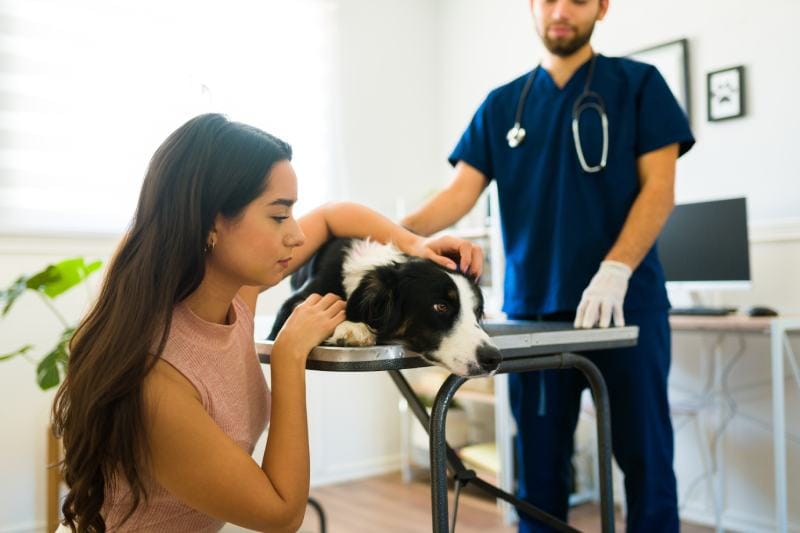
How Do I Care for a Dog With Dehydration?
The first thing you should always do if you think your dog may be dehydrated is talk to your vet. They will be able to guide you through properly checking for signs of dehydration on your own at home, or they may advise you to bring your dog in for an exam. A vet can help you determine the reason for your dog’s dehydration, as well as begin treatment for any medical conditions that may be present.
In the case of severe dehydration, your dog should be hospitalized to receive IV fluids. Severe dehydration is extremely difficult to remedy without IV fluids, and while trying to rehydrate, the body will continue to experience potentially long-lasting effects from the dehydration.
Mild dehydration, like that caused by mild bouts of diarrhea, play or exercise, or simply not drinking enough one day, can usually be remedied at home, although it’s still a good idea to talk to your vet first. Increasing access to water, offering wet food or food soaked in water, encouraging more water intake, adding a pet fountain, and enhancing the palatability of water by adding low-sodium broths, ice cubes, and unflavored electrolyte solutions are all safe ways to help care for a dehydrated dog at home.
Frequently Asked Questions (FAQ)
How Can I Prevent Dehydration in Dogs?
Dehydration isn’t difficult to prevent in a healthy dog. Make sure your dog always has access to clean, cool water. Never restrict their water access unless your vet tells you to. If your dog is experiencing an illness and is losing excess fluids because of vomiting or diarrhea, then you should encourage fluid intake to help maintain hydration.
Keep in mind, though, that a sick dog may not want to drink or eat, and if they do, they may throw it back up, so if your dog seems to be becoming dehydrated because of an illness, then it’s best to talk to your vet about how to maintain hydration at home. This may not be possible and your pet may need to be hospitalized for a while to get them back on track to health.
Does My Dog Need to Drink Water While Exercising?
The answer to this depends on what your dog is doing. If you’re taking your dog for a walk or jog around the neighborhood on a warm day, then they need to drink water when they get back home. If you are taking your dog on a hike or they’re training for a marathon with you, then you should plan to take water and offer it along the way.
Avoid letting your dog chug a large amount of water quickly since this can cause them to vomit it right back up. The longer your dog exercises, the warmer the temperature, and the harder the activity, the more water your dog will need to replace fluids lost.
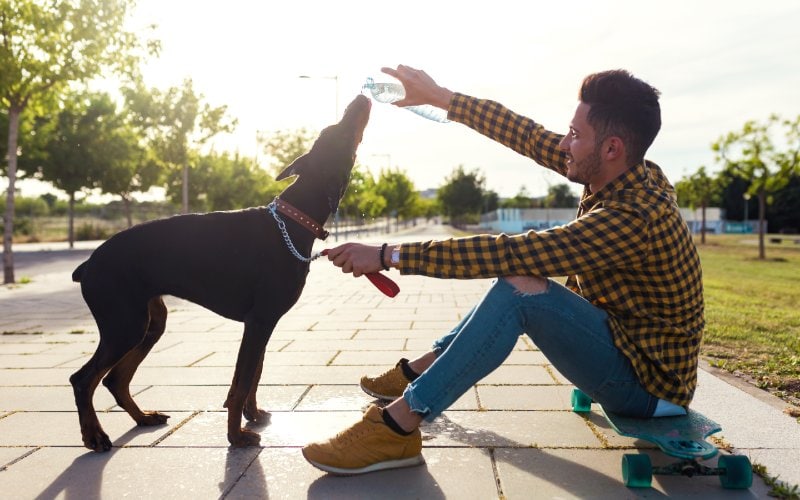
Should I Be More Concerned About a Dehydrated Puppy Than an Adult Dog?
Yes. The smaller or younger a dog, the more quickly they can become dehydrated. Puppies are very prone to becoming dehydrated, especially if they are losing excess fluids via vomiting or diarrhea, as with parvo and other dangerous puppyhood diseases. Puppies should be encouraged to eat and drink enough to maintain hydration, and if your puppy is sick and losing fluids quickly, they will need faster intervention than you might get for a healthy adult dog since they can rapidly become dangerously dehydrated. Dehydration in any age of dog should be taken seriously.
Final Thoughts
Dehydration can occur on a wide spectrum of severity, and mild dehydration can often be managed at home. Severe dehydration is an emergency, regardless of the cause, but if your dog has become severely dehydrated, then there is likely a serious medical problem occurring in conjunction with it. If your dog seems dehydrated at all, even if only mildly, it’s best to reach out to your vet for guidance. They know your pet and will be able to use their knowledge of your dog’s medical history, age, body condition, and signs of dehydration to determine if your dog needs medical attention.
Featured Image Credit: finchfocus, Shutterstock




